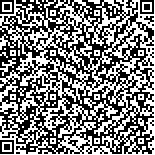| 摘要: |
| 采用“金字塔”法对瓦氏黄颡鱼幼鱼日粮中主要营养素的需要量进行了研究。试验共持续了60 天。实验日粮中蛋白质、脂肪、碳水化合物设定的范围分别为30%—48%、3%—18%和26%—35%。结果表明, 当日粮碳水化合物在26%—32%, 脂肪6%—12%, 蛋白质39%—48%, 能量在15.63—16.95MJ/kg 和能量蛋白比为364 —435J/mg 时, 瓦氏黄颡鱼幼鱼均获得较好的生长率; 日粮脂肪水平为12%以上时肝组织有不同程度的脂肪变性和坏死; 肌肉蛋白质、脂肪和碳水化合物的沉积受日粮中的蛋白质、脂肪和碳水化合物的影响, 存在显著性差异(P<0.05); 肝体指数和肠脂比随日粮中脂肪含量升高而增大, 肝脏中的糖原含量受到日粮中添加碳水化合物水平的影响, 且有显著差异(P<0.05); 日粮中可消化能显著影响肌肉中脂肪的沉积, 肠脂比、肝体指数和内脏比都随日粮中可消化能水平提高而呈上升趋势。本实验结果表明, 瓦氏黄颡鱼幼鱼日粮中主要营养素的适宜需要量为蛋白质39%—42%、脂肪6%—9%、碳水化合物26%—29%、能量15.63—16.95MJ/kg、能量蛋白比364—435J/mg。
|
| 关键词: 瓦氏黄颡鱼, 营养, 蛋白质, 脂肪, 碳水化合物 |
| DOI:10.11693/hyhz200904008008 |
| 分类号: |
| 基金项目:广西自然科学基金资助重点项目, 20086-1-1 号 |
|
| MACRONUTRIENT COMPOSITION OF FORMULATED DIETS FOR JUVENILE YELLOW CATFISH (PELTEOBAGRUS FULVIDRACO RICHARDSON) |
|
HUANG Jun1, FENG Jian1, SUN Ting2, HUANG Xiao-Yan2, HE Lei2, DU Wei-Ping2
|
|
1.College of Animal Science, Guangxi University;2.College of Animal Science,Sichuan Agriculture University
|
| Abstract: |
| 1280 artificially cultured yellow catfish juvenile (Pelteobagrus fulvidraco Richardson) in weight of (5.7±0.5)g were randomly divided into 64 groups in small cages to test 21 formulated diets of which 20 diets had three replicate per diet, and one with four replicate as the central one to calibrate bias. The test lasted for 60 days. The ranges of dietary protein, lipid and carbohydrate were designed between 30%—48%, 3%—18%, and 26%—35%, respectively. The aim of this study was to determine optimal macronutrient composition of formulated diets for Yellow catfish juvenile. The test showed that (1) at dietary protein 39%—48%, the corresponding dietary lipid was 6%—12% and carbohydrate 26%—29%, digestible energy (DE) 15.63—16.95MJ/kg, and the rate of digestible energy to protein (E/P) 364—435J/mg, the growth performance was good. No significant different in specific growth rate (SGR) was noticed at dietary protein levels of 42%—48%. The dietary lipid at 12%—18% caused fatty degeneration and necrosis; (2) The contents of protein, lipid and glycogen in muscle and liver were affected by dietary protein, lipid and carbohydrate levels (P<0.05). At carbohydrate 35%, the glycogen contents in both muscle and liver were the highest. (3) Hepatosomatic index (HSI) and fat in mesentery/body (FMB) increased significantly with increasing dietary lipid level (P<0.05), but not significantly by dietary protein and carbohydrate (P>0.05). In addition, the glycogen contents in muscle and liver were affected by dietary carbohydrate level (P<0.05). (4) The lipid content in muscle, HIS and FMB increased with increasing dietary digestible energy level, especially FMB (P<0.05). The experimental results indicated that for yellow catfish juvenile, the best formula should be at 39%—42% protein, 6%—9% lipid, 26%—29% carbohydrate, 15.63—16.95MJ/kg DE and 36.4—43.5MJ/kg E/P, ideally.
|
| Key words: Pelteobagrus fulvidraco Richardson, Nutrition, Protein, Lipid, Carbohydrate |
